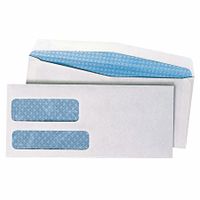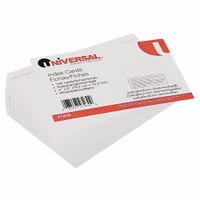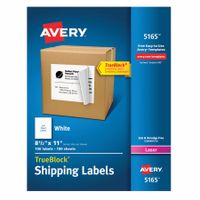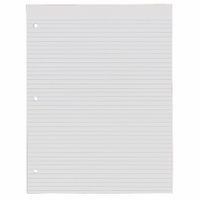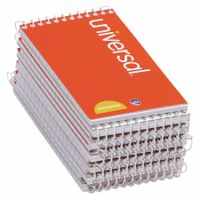Call +(254) 703 030 000 / 751 483 999 / 721 704 777
- Home
- Office Supplies
- Office Paper Notebooks
.....Read More
Frequently Asked Questions
What is the standard size of office printing paper?
The standard size of office printing paper is 8.5 x 11 inches, commonly known as "Letter" size in the United States and Canada. This size is widely used for a variety of office documents, including letters, reports, and forms. In other parts of the world, particularly in countries that follow the ISO 216 standard, the equivalent size is A4, which measures 210 x 297 millimeters or approximately 8.27 x 11.69 inches. Both sizes are designed to be compatible with most printers, copiers, and fax machines, ensuring ease of use and consistency in document handling.
How do I choose the right notebook for note-taking?
1. **Purpose**: Determine the primary use of the notebook. For academic notes, a larger notebook with ample space might be ideal. For personal journaling, a smaller, portable option could be better.
2. **Size**: Consider the size based on your needs. Common sizes include A4 for detailed notes, A5 for portability, and pocket-sized for quick notes.
3. **Binding**: Choose between spiral-bound, which allows for easy page removal and flexibility, or perfect-bound, which offers a more professional look but less flexibility.
4. **Paper Quality**: Look for paper thickness (measured in GSM). Higher GSM (80-100) prevents ink bleed-through, ideal for fountain pens or markers.
5. **Layout**: Decide on the page layout. Lined pages are great for structured notes, blank pages for sketches, and dot grid or graph for bullet journaling or technical drawings.
6. **Durability**: Consider the cover material. Hardcovers offer protection and durability, while softcovers are lighter and more flexible.
7. **Portability**: If you need to carry it around, opt for a lightweight and compact notebook.
8. **Aesthetic**: Choose a design that inspires you. A visually appealing notebook can motivate regular use.
9. **Environmental Impact**: Consider eco-friendly options made from recycled materials if sustainability is important to you.
10. **Price**: Set a budget. While premium notebooks offer better quality, there are affordable options that balance quality and cost.
11. **Additional Features**: Look for extras like built-in bookmarks, elastic closures, or pockets for added functionality.
12. **Brand Reputation**: Consider brands known for quality, such as Moleskine, Leuchtturm1917, or Rhodia, based on reviews and recommendations.
What are the benefits of using sticky notes in the office?
Sticky notes offer several benefits in an office setting. They are highly versatile and can be used for quick reminders, to-do lists, and important notes, helping to enhance personal and team productivity. Their bright colors and visibility make them effective for capturing attention and ensuring that important tasks are not overlooked. Sticky notes are also portable and can be easily moved from one place to another, allowing for flexible organization and prioritization of tasks.
They facilitate brainstorming sessions by enabling team members to jot down ideas quickly and rearrange them as needed, fostering creativity and collaboration. Sticky notes can be used to create visual boards, such as Kanban or Scrum boards, which help in tracking project progress and managing workflows efficiently.
Moreover, sticky notes are cost-effective and require no technology, making them accessible to everyone in the office. They can be used to label files, folders, and other office supplies, aiding in better organization and reducing clutter. Sticky notes also serve as a tool for personal communication, allowing colleagues to leave messages or feedback on each other's desks without interrupting their workflow.
In summary, sticky notes are a simple yet powerful tool that enhances organization, communication, and productivity in the office environment.
How can I organize loose-leaf paper effectively?
1. **Categorize and Sort**: Begin by sorting your loose-leaf papers into categories such as subjects, projects, or themes. This helps in identifying the volume and type of content you have.
2. **Use Binders**: Invest in binders of different sizes. Assign each category to a separate binder. Use dividers to further organize within each binder, labeling each section clearly.
3. **Label Everything**: Clearly label each binder and divider. Use a consistent labeling system, such as color-coding or numbering, to make retrieval easier.
4. **Sheet Protectors**: For important or frequently used documents, use sheet protectors. This not only keeps them safe but also makes them easy to flip through.
5. **Index and Table of Contents**: Create an index or table of contents for each binder. This can be a simple list at the front that outlines what is in each section.
6. **Use a Filing Cabinet**: For larger collections, consider a filing cabinet. Use hanging file folders to store papers vertically, which saves space and makes access easier.
7. **Digital Backup**: Scan important documents and store them digitally. This provides a backup and allows for easy sharing and access.
8. **Regular Maintenance**: Set a schedule to regularly review and declutter your papers. Remove outdated or unnecessary documents to keep your system efficient.
9. **Portable Solutions**: For papers you need on the go, use a portable file box or accordion folder. This keeps them organized and protected while traveling.
10. **Consistent System**: Stick to your organizational system. Consistency is key to maintaining order and ensuring you can always find what you need quickly.
What types of envelopes are best for mailing documents?
When mailing documents, selecting the right type of envelope is crucial to ensure the contents are protected and reach their destination in good condition. Here are some of the best types of envelopes for mailing documents:
1. **Standard Business Envelopes**: These are typically #10 envelopes, measuring 4 1/8 x 9 1/2 inches. They are suitable for mailing standard letter-sized documents (8.5 x 11 inches) that are folded into thirds. They are ideal for everyday correspondence.
2. **Window Envelopes**: These are similar to standard business envelopes but have a transparent window that displays the recipient's address printed on the document inside. This eliminates the need for addressing the envelope separately.
3. **Catalog Envelopes**: These envelopes are larger, typically 9 x 12 inches or 10 x 13 inches, and are designed to hold documents without folding. They are ideal for sending multiple pages, brochures, or booklets.
4. **Padded Envelopes**: These envelopes have a layer of padding, usually bubble wrap or foam, to protect the contents from damage. They are suitable for mailing documents that need extra protection, such as certificates or important legal papers.
5. **Tyvek Envelopes**: Made from a durable, tear-resistant material, Tyvek envelopes are lightweight yet strong. They are water-resistant and provide excellent protection for important documents.
6. **Security Envelopes**: These envelopes have a patterned inner lining that prevents the contents from being seen through the envelope. They are ideal for mailing sensitive or confidential documents.
7. **Self-Sealing Envelopes**: These envelopes have an adhesive strip that allows for easy sealing without the need for moisture. They are convenient and ensure a secure closure.
Choosing the right envelope depends on the size, importance, and sensitivity of the documents being mailed. Consider the level of protection needed and the ease of use when selecting an envelope type.
How do I load rolls of printing paper into a machine?
1. **Preparation**: Ensure the machine is turned off and unplugged for safety. Gather necessary tools like gloves and any specific equipment recommended by the manufacturer.
2. **Inspect the Roll**: Check the roll for any damage or defects. Ensure the paper type and size match the machine's specifications.
3. **Position the Roll**: Place the roll on the roll holder or spindle. Ensure it is aligned correctly, with the paper feeding from the top or bottom as required by the machine.
4. **Thread the Paper**: Pull the leading edge of the paper and thread it through the designated path. This may involve feeding it through rollers, guides, or a paper path. Follow the machine's diagram or manual for the correct threading path.
5. **Adjust Tension**: Ensure the paper is taut but not overly tight. Adjust the tension settings if necessary to prevent paper jams or misfeeds.
6. **Secure the Roll**: Lock the roll in place using any clamps or holders provided. This prevents the roll from moving during operation.
7. **Test the Feed**: Manually advance the paper a few inches to ensure it feeds smoothly and is properly aligned. Check for any resistance or misalignment.
8. **Close the Machine**: If the machine has a cover or door, close it securely. Ensure all safety mechanisms are engaged.
9. **Power On and Test**: Plug in and power on the machine. Run a test print to ensure the paper feeds correctly and the print quality is satisfactory.
10. **Monitor Initial Prints**: Observe the first few prints to ensure there are no issues with alignment, tension, or feed. Adjust settings as necessary.
11. **Regular Checks**: Periodically check the paper roll during operation to ensure it remains properly aligned and tensioned.
What are the differences between bound notebooks and loose-leaf paper?
Bound notebooks and loose-leaf paper differ in several key aspects:
1. **Structure**: Bound notebooks have pages that are permanently attached, often through stitching, glue, or spiral binding. Loose-leaf paper is not bound and is typically stored in binders, allowing for easy removal and rearrangement.
2. **Portability**: Notebooks are generally more portable as they are a single unit. Loose-leaf paper requires a binder or folder, which can be bulkier.
3. **Flexibility**: Loose-leaf paper offers greater flexibility. Pages can be added, removed, or reorganized without disrupting the order. Notebooks have a fixed number of pages and a set order.
4. **Durability**: Bound notebooks are often more durable due to their protective covers and binding. Loose-leaf paper can be more susceptible to damage unless stored in a sturdy binder.
5. **Cost**: Loose-leaf paper can be more economical, especially if you only need a few sheets at a time. Notebooks can be more expensive due to their binding and cover materials.
6. **Organization**: Loose-leaf paper allows for customizable organization with dividers and tabs. Notebooks have a fixed structure, which can limit organization options.
7. **Aesthetics**: Notebooks often come in various designs and styles, offering more aesthetic choices. Loose-leaf paper is typically plain, with the binder providing any decorative element.
8. **Usage**: Notebooks are ideal for continuous writing, like journaling or note-taking. Loose-leaf paper is better for subjects requiring frequent updates or reorganization, like project planning.
9. **Environmental Impact**: Loose-leaf paper can be more environmentally friendly if only necessary pages are used. Notebooks may result in wasted pages if not fully utilized.
How can I ensure my printed documents are of high quality?
To ensure high-quality printed documents, start by selecting the right paper. Choose a paper type that suits your document's purpose, such as glossy for photos or matte for text-heavy documents. Ensure the paper is compatible with your printer to avoid jams and smudges.
Next, use a high-resolution file. For images, a resolution of at least 300 DPI (dots per inch) is recommended to maintain clarity and detail. Ensure your text is sharp by using vector-based formats like PDF for documents.
Calibrate your printer regularly. This involves adjusting the printer settings to ensure colors and text are printed accurately. Most printers have built-in calibration tools or software to assist with this process.
Select the appropriate print settings. Use the highest quality setting available on your printer for important documents. This may take longer to print but will result in better quality. Adjust color settings to match the document's requirements, ensuring colors are vibrant and true to the original.
Maintain your printer. Regularly clean the print heads and replace ink or toner cartridges as needed. Use genuine or high-quality third-party cartridges to avoid issues with print quality.
Check your document layout. Ensure margins, spacing, and alignment are consistent. Use high-quality fonts and avoid excessive use of colors or graphics that may not print well.
Finally, conduct a test print. Before printing a large batch, print a single copy to check for any issues. This allows you to make necessary adjustments without wasting resources.
By following these steps, you can significantly enhance the quality of your printed documents, ensuring they are professional and visually appealing.
What are the best practices for using labels in an office setting?
1. **Clarity and Simplicity**: Use clear, concise language on labels to ensure immediate understanding. Avoid jargon or overly technical terms unless universally understood within the office.
2. **Consistency**: Maintain a consistent labeling system across the office. Use the same font, size, and color scheme to create a uniform look, which helps in quick identification and reduces confusion.
3. **Durability**: Choose durable materials for labels, especially in high-traffic areas or on frequently used items. Laminated labels or those made from weather-resistant materials can withstand wear and tear.
4. **Visibility**: Ensure labels are easily visible and legible from a reasonable distance. Use contrasting colors to make text stand out against the background.
5. **Relevance**: Regularly update labels to reflect any changes in contents, ownership, or location. Outdated labels can lead to inefficiencies and errors.
6. **Categorization**: Group similar items together and label them accordingly. This practice aids in organization and retrieval, making it easier for employees to find what they need quickly.
7. **Location-Specific**: Place labels in logical locations. For example, label shelves at eye level and ensure file labels are on the spine for easy identification when stored vertically.
8. **Use of Technology**: Consider using digital labeling systems or QR codes for dynamic information that can be updated without replacing physical labels.
9. **Training and Guidelines**: Provide training and clear guidelines on the labeling system to ensure all employees understand and adhere to the practices.
10. **Feedback and Improvement**: Encourage feedback from employees on the labeling system and be open to making improvements for better efficiency and usability.
How do I select the right paper for specific office tasks like printing or copying?
To select the right paper for specific office tasks like printing or copying, consider the following factors:
1. **Purpose**: Determine the primary use of the paper. For general office printing and copying, standard 20 lb. bond paper is sufficient. For documents requiring a professional appearance, such as presentations or reports, opt for a heavier weight like 24 lb. or 28 lb.
2. **Brightness**: Paper brightness affects readability and print quality. A higher brightness level (measured on a scale from 1 to 100) results in sharper text and more vibrant colors. For everyday tasks, a brightness level of 92-94 is adequate. For high-quality prints, choose paper with a brightness of 96 or higher.
3. **Finish**: The finish of the paper impacts the look and feel of the document. Matte finish is suitable for text-heavy documents, while glossy or semi-gloss finishes enhance color prints and images.
4. **Size**: Standard letter size (8.5" x 11") is common for most office tasks. For specialized needs, such as legal documents or brochures, consider legal size (8.5" x 14") or tabloid size (11" x 17").
5. **Color**: White is the standard choice for most office tasks. However, colored paper can be used for organization, emphasis, or creative projects.
6. **Printer Compatibility**: Ensure the paper is compatible with your printer type (inkjet or laser). Some papers are specifically designed for one type, affecting print quality and preventing jams.
7. **Environmental Considerations**: If sustainability is a priority, look for recycled paper or paper certified by organizations like the Forest Stewardship Council (FSC).
By evaluating these factors, you can select the appropriate paper that meets the specific needs of your office tasks, ensuring optimal performance and quality.


